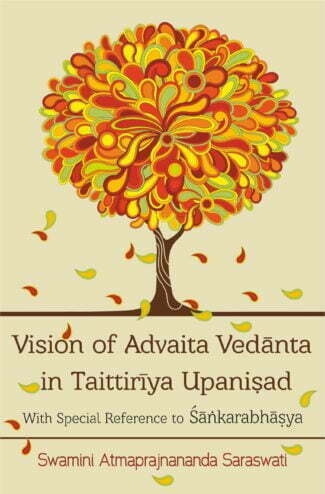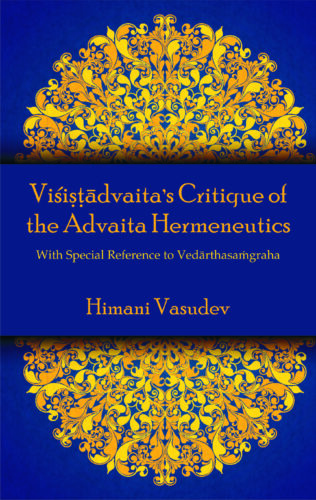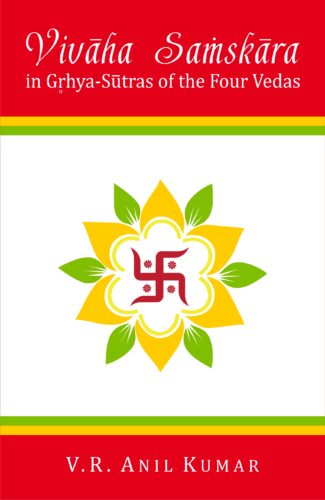Showing 1101–1110 of 1176 results

To resolve controversies related to Vedic Religion/Culture, the author comes to grips with the idea of Gods omnipresence in Aryan religious thought, the Rgvedic Hymn of Visvedevas, etc. and explores matters of historical and literary importance.
Despite two centuries of their multifarious, critical studies in India and the Western world, Vedic writings unveil myriad questions that have either baffled scholars or have led to serious controversies. A distinguished Indologist, Professor P.L. Bhargava marshals, for the first time, indisputable evidence to resolve some of these questions like, for instance: Who wrote the Rigvedic hymns? Which deities, in the Rigveda, constitute the group, called Adityas? Or, again in the Rigvedic contexts, what does the word asura mean? Who, of the two major Vedic gods: Indra and Varuna, has greater antiquity? Is Ayodhya: the birth place of Lord Rama, mentioned in the early Vedic literature? Where did Lord Ramas ancestors: the kings of Ikshvaku dynasty originally rule? And how far danastutis (the praises of gifts) of the Rigveda can help scholars to reconstruct the political history of the Vedic Age? Combining in him the erudition of a Sanskritist and a historian, the author also comes to grips with the idea of Gods omnipresence in Aryan religious thought, the enigmatic Hymn of Vishvedevas in the Rigveda, or the confounding words/phrases in its Hymn of Creation; besides several other issues of religious, cultural; historical and literary importance all these on the basis of his unbiased, life-long studies of the Vedic texts. An exquisite presentation of Dr Bhargavas writings, the volume covers a variety of themes that range from the very authorship of the Rigvedic hymns to the status of Vedic religion today. Invaluable to the scholars and specialists of Vedic lore.

This book deals with the various aspects of science and scientific thoughts of the Vedic bards reflected in their hymns. Attemps have been made here to analyse the Vedic verses in scientific terms adhering to various branches of modern science.
This book Vedic Science and Technology contains, in its ten chapters, the significant aspects of science and scientific thoughts of the Vedic bards reflected in their hymns and the modern scientific theories developed later. The Vedic deities symbolize the natural phenomena which the human beings of that period came across in their day-to-day life and had interactions with such events. Ostensibly, the modern scientific theories and practices have their roots in the most ancient tradition and culture. Various branches of knowledge such as Astronomy, Astrology, Cosmology, Cosmogony, Space-time Continuum, Mathematics, Chemistry, Physics, Meteorology, Seismology, Botany, Zoology, Medicine, Agriculture, Geology, Environmental Science and Ecology, and Science and Technology have been discussed here in accordance with speculations of the Vedic bards gleaned from the hymns. Earlier scholars belonging to other disciplines, especially from Linguistics, Mathematics, Physics and Astronomy have tried their best to interpret the Vedas from the point of view of their particular disciplines. But, here, in this study, attempts have been made to analyse the Vedic verses in scientific terms adhering to various branches of modern science. The present discourse, no doubt, forms a strong base for any microscopic investigations of the Vedic thought and notion to be taken up in future by our inspired scholars and scientists.

This book deals with the various aspects of science and scientific thoughts of the Vedic bards reflected in their hymns. Attemps have been made here to analyse the Vedic verses in scientific terms adhering to various branches of modern science.
This book Vedic Science and Technology contains, in its ten chapters, the significant aspects of science and scientific thoughts of the Vedic bards reflected in their hymns and the modern scientific theories developed later. The Vedic deities symbolize the natural phenomena which the human beings of that period came across in their day-to-day life and had interactions with such events. Ostensibly, the modern scientific theories and practices have their roots in the most ancient tradition and culture. Various branches of knowledge such as Astronomy, Astrology, Cosmology, Cosmogony, Space-time Continuum, Mathematics, Chemistry, Physics, Meteorology, Seismology, Botany, Zoology, Medicine, Agriculture, Geology, Environmental Science and Ecology, and Science and Technology have been discussed here in accordance with speculations of the Vedic bards gleaned from the hymns. Earlier scholars belonging to other disciplines, especially from Linguistics, Mathematics, Physics and Astronomy have tried their best to interpret the Vedas from the point of view of their particular disciplines. But, here, in this study, attempts have been made to analyse the Vedic verses in scientific terms adhering to various branches of modern science. The present discourse, no doubt, forms a strong base for any microscopic investigations of the Vedic thought and notion to be taken up in future by our inspired scholars and scientists.

This volume contains scholarly papers from the Veda Sessions of the 15th World Sanskrit Conference, touching a broad spectrum of the Vedic tradition and focusing on three major aspects of that tradition: language and linguistics; textual criticism and text edition; and culture, philosophy, mythology.
The Vedas hold a position of prominence, both as the oldest documents of Sanskrit and as the most venerable texts of Hinduism.
This volume contains scholarly papers from the Veda Sessions of the 15th World Sanskrit Conference, touching a broad spectrum of the Vedic tradition and focusing on three major aspects of that tradition: language and linguistics; textual criticism and text edition; and culture, philosophy, mythology.
Language and linguistics papers range from syntax and semantics (Hock, Küummel) to morphology (Tucker), onomastics (Pinault) and rhetorical structure (Klein). Remarkably, three of the articles in the second part deal with the tradition of Atharvaveda (Bahulkar, Kulkarni, and Rotaru and Sumant); the remaining two focus on Rigveda (Khare and Köhler). Two papers in the last part deal with matters of Vedic philosophy (Benedetti and Vedi), one is devoted to mythology and ritual (Gadgil), and one addresses ritual and material culture (Nishimura).

Dr. Murthy marshals the whole extent of geological data from the Vedic/post-Vedic literatures and even later works like Varahamihiras Brhatsamhita to highlight the Vedic world-view of the earth, particularly the Vedic theory on Earth science.
Vedas are indisputably the oldest of mankinds documents. Which not just magnificently articulate the early civilized mans wonderment about the cosmos and his yearnings for the divine, but also unfold the foundations of many ancient sciences, like mathematics, astronomy, alchemy, metallurgy, botany and medicine. This book, however, is the first ever effort to show how Vedas embody the earliest discourses on the earth and the earth-related phenomena. Combining in him the acumen of a professional earthscientist and a highly proficient Sanskritist, Dr. Murthy marshals the whole extent of geological data from the Vedic/post-Vedic literatures, and even some of the later works, like Varahmihiras Brihatsamhita (of the 5th century ad) in his thematic effort to highlight the Vedic worldview of the earth and, importantly, how it almost approximates the projections of modern earthscience. Developed from over three decades of Dr. Murthys researches in ancient Sanskrit literature, the study employs contemporary scientific idiom to describe Vedic perception of the earth, its origin, shape, dimensions, constitution, movements, quakes/tremors, and its position vis-a-vis the solar system, stars and ethereal space. Also including, contextually, the Vedic idea of heliocentricity, the book puts forth the Veda-based methods for deciphering/predicting deep-focus earthquakes for future research and investigation. Together with a glossary of Sanskrit terms and relevant bibliographic references, this geological perspective on the Vedas will fascinate scholars, specialists and discerning readers alike.

The book gives account of the Vaishnavite temples of Kanci, providing numerous pictures with the structural, architectural and sculptural aspects of the temples. It also throws light on the historical, religious, social and cultural values of the temples.
Kancipuram was the important capital of north Tamil Nadu for a long period — from the first-second century ce to the end of the seventeenth century. It was a beautiful city laid out in the form of a lotus, according to the poem Perumbanarrupadai. It was admired by the world as a place famous for its festivals and noted for its temples. Through the ages, it has been the abode of many religious leaders who devoted their lives to the religious uplift of the people.
This well-illustrated work presents a history of the Vaishnavite temples of Kanci, focusing on the history of the ancient temples from the Sangam Age onwards, the many legends, myths and other accounts that refer to it, and its location and building. It provides a detailed account of some major temples of the city supported by numerous pictures of the temples that cover various aspects of each — the entrance and other parts of each temple structure, its architecture, and its artistic engravings particularly its sculptural beauty. It delves into the Vaishnava tradition for concepts and ideas underlying the construction of the sanctum and the sub-shrines, and portrayal of divine forms on the walls, pillars and other parts of the temple. There is a detailed study of the sculptures in the main walls of the temples and the main deities in the shrines. It also examines the many inscriptions found in the temples to offer insights into the historical, religious, social and cultural value of the temples.
The volume is bound to interest a host of readers, particularly scholars and students of Indology involved in the study of the cultural traditions of south India and its religious art and architecture.

This book unveils the vision of Advaita Vedanta in Taittiriya Upanishad with special reference to Shankarabhashya in a unique style, detailing the importance of shabda-pramana, along with free translations of three vallis of the Upanishad. It presents the oneness of triangular phenomenon called jiva, jagat and Ishvara from the Advaita Vedanta perspective.
This book unveils the vision of Advaita Vedanta in Taittiriya Upanishad with special reference to Shankarabhashya in a unique style. Upanishads are shabda-pramana, and this work adequately details the six pramanas, which hold the key to understand the significance of shabda-pramana, along with the five shanti-mantras in Taittiriya Upanishad. As the crux, it analyses Shankaras commentary Taittiriya-Bhashyam on Taittiriya Upanishad, enabling one to understand the deep layers of Advaita Vedanta in detail.
The core theme Vision of Advaita in Taittiriya Upanishad discusses the oneness of the triangular phenomenon called jiva, jagat and Ishvara. It delves deep into the method of deciphering the mahavakyas as well. While following closely the source literature, this volume attempts to detail the nuances of Taittiriya-Bhashyam. The approach of navigating the reader to the principal theme of Advaita Vedanta is expected to give him/her a good background. In ensuring this the volume provides relevant citations and informative explanatory notes. More importantly, it across three vallis Shikshavalli, Brahmanandavalli and Bhriguvalli provides free translations of Taittiriya Upanishad.
This elaborate and scholarly book is expected to add great value to students who wish to have a better understanding of the great Indian tradition called Advaita Vedanta.

Vedānta is the very heart of Indian philosophy. The various schools of Vedānta have been explored under diverse categories including ontological and epistemological, but they are a storehouse of so much more. “Hermeneutics” in simple words can be the theory of interpretation and this book has studied the critique of the Advaita hermeneutics by Rāmānujācārya based on Vedic statements like tat tvam asi, tadaikāta bahu syāma, neha nānāsti kiñcana and many others in his book Vedārthasaṁgraha which mirrors a complete vision of the Upaniṣads. Rāmānujācārya has shown how the Śruti statements can be seen in a coherent manner resolving the conflicts of bheda and abheda. The nature of a word and its various śaktis, followed by how successful are words in describing the concepts of sat, cit and ānanda, are also discussed here.
This book is an initial effort in the hermeneutic studies of Indian texts, which have been kept limited to the scope of philosophy, theology or religion alone. Many more linguistic treasures can be found here.
Vedānta is the very heart of Indian philosophy. The various schools of Vedānta have been explored under diverse categories including ontological and epistemological, but they are a storehouse of so much more. “Hermeneutics” in simple words can be the theory of interpretation and this book has studied the critique of the Advaita hermeneutics by Rāmānujācārya based on Vedic statements like tat tvam asi, tadaikāta bahu syāma, neha nānāsti kiñcana and many others in his book Vedārthasaṁgraha which mirrors a complete vision of the Upaniṣads. Rāmānujācārya has shown how the Śruti statements can be seen in a coherent manner resolving the conflicts of bheda and abheda. The nature of a word and its various śaktis, followed by how successful are words in describing the concepts of sat, cit and ānanda, are also discussed here.
This book is an initial effort in the hermeneutic studies of Indian texts, which have been kept limited to the scope of philosophy, theology or religion alone. Many more linguistic treasures can be found here.

A comprehensive and intelligent piece of literature, for all that you yenned to know about the King of Indian slide Guitar, creator of Mohan Veena and Vishwa Veena, Grammy Award winner and a true human being in absolute terms, Pandit Vishwa Mohan Bhatt, complete with his inspirations, aspirations, musings and goals.
Saga of a living phenomenons journey on mesmerisingly melodious musical notes. His fascinating imagination, strengthened by divine interaction, culminated in the innovation of the Mohan Veena and the Vishwa Veena. Embodiment of avant garde thought process, the legend crafted the instruments to express the subtle nuances and intricacies of Indian Classical raags, with perfection. His relentless efforts and soul stirring concerts seasoned by a fine balancing act between Indian Classical and other Global-regional musical styles, catapulted Indian Classical music, to a global stage. A chronicle of all those fusion concerts with compatriot musicians and several globally renowned virtuosos which surrepetitiously slip one into a state of trance, with their resonating acoustics. Recollections of that glorious yet humble soul who helped realize the Great Indian Musical Dream. Reflections on the performances and discography; aspirations and inspirations; musings and goals of a paradigm of musical genius. Here is a comprehensive piece of writing, for all that you yearned to know about the King of Indian slide Guitar, the creator of Mohan Veena and Vishwa Veena, a Grammy Award winner and a true human being in absolute terms Pandit Vishwa Mohan Bhatt.

Of a rare kind, this book does comparative analyses after studying seventeen Grhya-Sutras across four Vedas of the number and type of rituals of marriage in each Grhya-Sutra and the order of performance of rituals. It also lists the mantras (with English translation) and their sources and talks about the differences in employing the mantras.
Vivaha (marriage), in Hindu society, is one of the most important samskaras, out of the sixteen sacraments, which a person steps in with full understanding/consciousness. Marriage is a fascinating experience that stays alive in ones mind throughout the life. The mantras and slokas of the Grhya-Sutras of the four Vedas, chanted in this ritual, are in Sanskrit and a vast majority is unaware of their meanings and just follows the instructions of the celebrant priest, purohita.
The author delves deep into the Grhya-Sutras of Vedas and brings forth the details of vivaha samskara principles, philosophy, practices, rituals and so on. Grhya-Sutras Asvalayana, Sankhayana and Kausitaki of Rigveda; Paraskara (Sukhla Yajurveda), Apastamba and Hiranyakesin (Krsna Yajurveda), Baudhayana, Varaha, Manava, Agnivesya, Bharadvaja, Kathaka and Vaikhanasa of Yajurveda; Gobhila, Khadira and Jaimini of Samaveda; and Kausika of Atharvaveda are well explored and seriously analysed, having given the original mantras in Sanskrit with their English translation.
Of a rare kind, this book does comparative analyses of the number and type of rituals in each Grhya-Sutra and the order of performance of rituals.
This scholarly work creates a sudden seriousness and sanctity to vivaha samskara through the detailing of mantras and the rituals. Being in it, one is not far off the Vedic period, giving a new meaning and dimension to our understanding of Hindu vivaha samskara and its sanctity.
| There are no products |